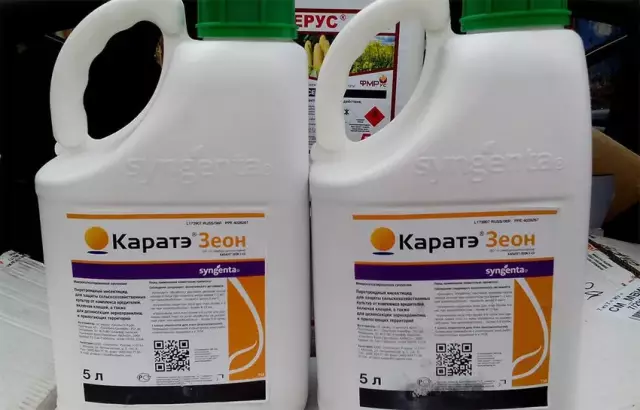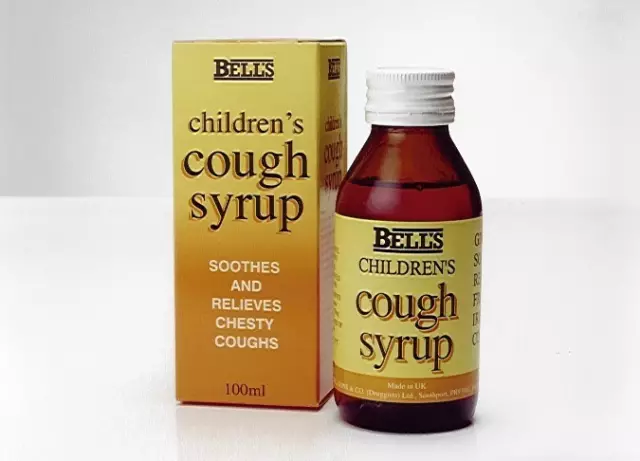- Author Rachel Wainwright [email protected].
- Public 2023-12-15 07:39.
- Last modified 2025-11-02 20:14.
Aphthous stomatitis in children
The content of the article:
- Causes and risk factors
- Forms
- Symptoms
- Diagnostics
- Treatment of aphthous stomatitis in children
- Potential consequences and complications
- Forecast
- Prevention
Aphthous stomatitis in children is an inflammatory process that affects the mucous membrane of the child's oral cavity and is accompanied by the formation of erosive defects (aft) on it.

Aphthous stomatitis - inflammation of the oral cavity with the formation of aft
Causes and risk factors
The exact cause of aphthous stomatitis in children is not known. Today, most experts associate the development of the disease with the peculiarities of the functioning of the immune system in childhood, namely, with its incorrect identification of protein molecules that make up saliva. By mistakenly recognizing a protein molecule as foreign to the body, the immune system seeks to destroy it by activating lymphocytes. This process leads to the formation of aphthous ulcers on the oral mucosa. The autoimmune theory of the development of aphthous stomatitis in children also explains why the disease often takes on a long, sluggish character.
The incidence of aphthous stomatitis is higher in children who use toothpastes to care for the oral cavity, which include sodium lauryl sulfate (the component is added to give the paste foaming properties). Sodium lauryl sulfate has a strong drying effect, as a result of prolonged use of toothpaste containing this chemical compound, the upper layer of the oral mucosa is damaged in the child, and the lower layers become more vulnerable to chemical and physical irritants.
The relationship between the development of aphthous stomatitis and the use of hygienic oral care products containing sodium lauryl sulfate is supported by the results of many scientific studies. In particular, the fact was confirmed that when children suffering from chronic aphthous stomatitis stopped using toothpaste with sodium lauryl sulfate, in 81% of cases the symptoms of the disease subsided, and it went into a stage of stable remission.
Another risk factor that can cause the development of aphthous stomatitis in children is trauma to the oral mucosa (biting, injury from solid food or a sharp edge of the tooth). In about 40% of children, the development of the disease was preceded by a violation of the integrity of the oral mucosa.

Food allergies can cause aphthous stomatitis in a child
An allergic reaction to food can provoke the onset of aphthous stomatitis in children. The most common food allergens are:
- seafood;
- chocolate;
- strawberries, figs, pineapples, citrus fruits;
- tomatoes;
- cereals with a high gluten content (wheat, oats, rye, barley).
Pathogenic microflora also has an effect on the development of aphthous stomatitis in children. This fact is confirmed by the detection of viral and bacterial agents in the content of the aft. Long-term therapy of children with antihypertensive, antiarrhythmic or nonsteroidal anti-inflammatory drugs can also be complicated by aphthous stomatitis.
In the development of chronic aphthous stomatitis (HRAS) in children, a hereditary predisposition plays a certain role. So in 30% of children suffering from chronic aphthous stomatitis, one or both parents are susceptible to this disease. In fraternal twins, HRAS is observed in 57% of cases, and in identical twins in 91%, which serves as an additional confirmation of the genetic predisposition.
Factors that increase the risk of developing aphthous stomatitis in children are:
- severe psychological stress;
- power supply errors;
- lack of vitamins of group B, ascorbic and / or folic acid in the body;
- lack of trace elements (selenium, zinc, iron).
The above factors contribute to a decrease in local immunity and thereby negatively affect the state of the oral mucosa, which, in turn, contributes to the formation of aft.
When carrying out a complete medical examination of children with aphthous stomatitis, immunodeficiency states, diseases of the gastrointestinal tract, and systemic blood diseases are often revealed. Correction of the underlying disease leads to either complete recovery or long-term remission of aphthous stomatitis in children.
Forms
Aphthous stomatitis in children is acute and chronic. The chronic form of the disease is the outcome of an acute process and develops against the background of weakened immunity or severe concomitant diseases, but it can occur as a primary pathology.
According to the peculiarities of the clinical course of the disease, the following forms of aphthous stomatitis in children are distinguished:
- fibrous;
- necrotic;
- grandular;
- scarring;
- deforming.
Symptoms
The clinical picture of aphthous stomatitis in children is determined by the form of the disease.
With fibrous aphthous stomatitis, isolated erosions appear on the mucous membrane of the oral cavity, the surface of which is covered with fibrous plaque. Epithelialization of erosion occurs in 10-14 days. Most often, aphthae are localized in the area of transitional folds, on the lateral surfaces of the tongue, the mucous membrane of the lips. With the transition of the disease to a chronic form, initially relapses occur 1-2 times a year. In the future, the periods of remission become shorter and shorter, and over time, the disease can take a permanent course.
The necrotic form of aphthous stomatitis in children usually develops against the background of severe chronic somatic diseases or blood diseases. Aphthae formed on the mucous membrane are painless. After some time, they transform into ulcers, the epithelialization of which occurs within 15-30 days.
With the defeat of the ducts of the salivary glands, the grandular form of aphthous stomatitis develops. In this case, the aphthae are localized in the area of the salivary glands. They are quite painful, healing occurs in 7-21 days. In the future, exacerbation of the disease can be triggered by an exacerbation of a chronic infection, acute respiratory diseases, hypothermia.

Varieties of stomatitis and their manifestations
With the development of cicatricial aphthous stomatitis in children, not only the mucous membrane is drawn into the pathological process, but also the deeper layers, represented by connective tissue fibers. Rashes are localized at the exit site of the ducts of the salivary glands, anterior palatine arches, pharynx. Erosions appear, which are later transformed into large painful ulcers, reaching 1.5 cm in diameter. Ulcers heal within 2-3 months with the formation of a well-visible scar.
The most severe form is deforming aphthous stomatitis, in which deep damage to the connective tissue occurs. The disease is persistent. Epithelialization of ulcers occurs slowly, in the process of healing, the lips, anterior palatine arches, and the soft palate are deformed. In cases where ulcers are located in the lip area, the disease can be complicated by the development of a microstomy (narrowing of the mouth opening).
Diagnostics
Diagnosis of aphthous stomatitis in children is based on the characteristic clinical signs of the disease. In some cases, there is a need for differential diagnosis with decubital ulcers, specific lesions of the oral mucosa, ulcerative necrotizing and herpetic stomatitis.
Treatment of aphthous stomatitis in children
The goal of the treatment of aphthous stomatitis in children is to achieve complete recovery or stable remission in chronic forms of the disease.
Local therapy consists in treating the oral cavity with antiseptic solutions (chlorhexidine, hydrogen peroxide). With severe pain, the aphthae are treated with a suspension of local anesthetics in glycerin. For stomatitis of allergic origin, a mixture is applied to the aphthae, which includes hydrocortisone, novocaine and heparin.
To clean the surface of aphthous erosions and ulcers, enzyme preparations (chymotrypsin, trypsin) are used. In order to accelerate the epithelialization process, the use of propolis preparations, Kalanchoe juice, vitamins (rutin and ascorbic acid) is shown.
According to indications in the complex treatment of aphthous stomatitis in children, antihistamines, antiviral, multivitamin, sedatives, tranquilizers, immunoprotectors and immunomodulators are used internally.

Chlorhexidine and hydrogen peroxide are used as topical treatment for aphthous stomatitis in children.
Physiotherapy (laser therapy, electrophoresis, phonophoresis) is effective in the treatment of chronic forms of aphthous stomatitis.
In acute aphthous stomatitis or exacerbation of chronic stomatitis, children are prescribed a hypoallergenic diet, with the exclusion of products from the diet that have an irritating effect and can injure the oral mucosa.
Potential consequences and complications
In the acute form of aphthous stomatitis in children, complications are not observed. Some types of chronic aphthous stomatitis can lead to deformities of the mouth and lips, which may require surgical correction.
Forecast
Timely treatment of aphthous stomatitis in children allows in most cases to achieve complete recovery. With a weakened immune system, the disease can become chronic. But in this case, persistent treatment allows you to achieve long-term remission, and sometimes complete recovery.
Prevention
Prevention of aphthous stomatitis in children should be aimed at strengthening the immune system and increasing the body's defenses. It includes:
- balanced diet;
- sports, outdoor games;
- regular stay in the fresh air;
- hardening;
- observance of the rules of oral hygiene, rational selection of hygiene products;
- immune corrective therapy if indicated.
In addition, children should be examined by a dentist at least twice a year, since timely treatment of diseases of the teeth and gums significantly reduces the risk of developing aphthous stomatitis.
YouTube video related to the article:

Elena Minkina Doctor anesthesiologist-resuscitator About the author
Education: graduated from the Tashkent State Medical Institute, specializing in general medicine in 1991. Repeatedly passed refresher courses.
Work experience: anesthesiologist-resuscitator of the city maternity complex, resuscitator of the hemodialysis department.
The information is generalized and provided for informational purposes only. At the first sign of illness, see your doctor. Self-medication is hazardous to health!






